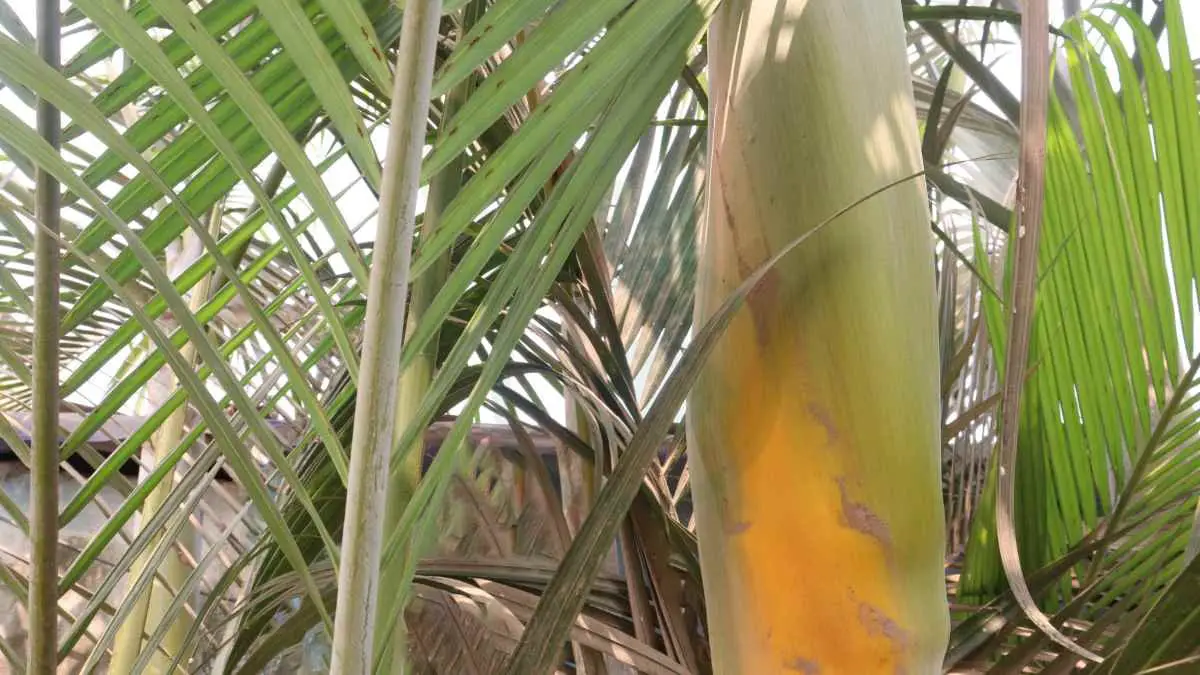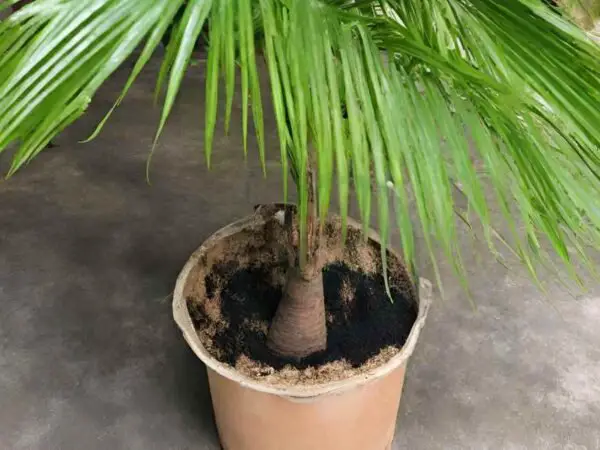Curious about the botanical name of the popular tropical plant Areca Palm and its common names? Let's delve into the contrast between its common name and scientific designation of this tropical plant, focusing on characteristics like leaf size and medium. The Areca Palm, known for its lush fronds and tropical charm, goes by the botanical name Dypsis lutescens. This striking plant adds a touch of greenery to indoor spaces while boasting an intriguing scientific identity that sets it apart.
Key Takeaways
- Know the Botanical Name: Understanding the botanical name of the Areca Palm (Dypsis lutescens) helps in accurate identification and care.
- Provide Optimal Conditions: Create a thriving environment by ensuring proper light, water, and humidity levels for the Areca Palm to flourish.
- Combat Common Pests: Stay vigilant against pests like spider mites and scale insects to maintain the health of your Areca Palm outdoors.
- Manage Diseases Promptly: Timely intervention and proper sanitation practices are crucial in preventing and managing diseases that can affect the Areca Palm.
- Appreciate Cultural Significance: Recognize the historical and cultural importance of the Areca Palm in various traditions and rituals.
- Care for Your Houseplant: Regularly dusting, watering appropriately, and monitoring for signs of stress are essential aspects of caring for an Areca Palm.
Botanical Overview
Areca Palm Family
The Arecaceae family, commonly known as the palm family, plays a crucial role in plant taxonomy. With over 2,500 species, it showcases remarkable diversity in the plant kingdom.
Genus Details
Dypsis genus stands out with its slender stems and feather-like fronds. When compared to other palm genera, Dypsis is known for its elegant appearance and adaptability to various climates. Within the Arecaceae family, Dypsis shines with its unique growth patterns and striking foliage.
Species Insight
Dypsis lutescens, also called the Areca Palm, boasts distinctive arching fronds with vibrant green hues. Originating from Madagascar, this species thrives in tropical environments with well-draining soil. In horticulture, Dypsis lutescens is highly valued for its ornamental beauty and air-purifying properties.
Optimal Growth Conditions
Soil Requirements
Areca palms thrive in well-drained soil with a mix of peat moss, sand, and perlite for optimal growth. This composition ensures proper root aeration and drainage. Maintaining soil quality is crucial for healthy Areca palm growth.
To prevent waterlogging, ensure the soil is well-drained to avoid root rot, a common issue in poorly drained soils. Regularly check the moisture levels and adjust watering accordingly to maintain the ideal soil condition.
For healthy growth, consider repotting Areca palms every 2-3 years to refresh the soil nutrients and provide ample space for root expansion.
Light and Temperature
Areca palms prefer bright, indirect light but can tolerate some shade. Direct sunlight can scorch their leaves, so place them in a location with filtered light for optimal growth.
Maintain temperatures between 65-75°F (18-24°C) during the day and above 50°F (10°C) at night. Protect Areca palms from cold drafts and sudden temperature fluctuations to prevent stress on the plant.
During winter months, consider placing Areca palms near a humidifier or misting their leaves to combat dry indoor air that can affect their health.
Watering Practices
Areca palms require consistent moisture levels in the soil but are sensitive to overwatering. Water thoroughly when the top inch of soil feels dry, ensuring excess water drains out to prevent waterlogged roots.
Avoid underwatering as it can lead to browning and drying of leaf tips. Establish a watering schedule based on your home's humidity levels and adjust during seasons with higher or lower humidity.
Consider using a moisture meter to accurately gauge the soil moisture level and prevent both overwatering and underwatering.
Fertilization Needs
Fertilizers play a vital role in providing essential nutrients for Areca palm growth. Use a balanced liquid fertilizer diluted to half strength during the growing season every 4-6 weeks for optimal results.
Avoid fertilizing newly repotted Areca palms for at least six months to prevent root burn. Choose a fertilizer specifically formulated for palm plants to ensure they receive adequate nutrients without causing harm.
To prevent fertilizer burn, always water your Areca palm before applying fertilizer and follow the recommended dilution instructions carefully.
Common Pests
Identification Tips
Spider Mites
Spider mites are tiny pests that suck sap from leaves, causing stippling and webbing on plants. These pests thrive in dry conditions.
- Look for fine webbing on the undersides of leaves to identify spider mite infestation.
- Spider mites cause leaves to appear speckled or discolored, leading to reduced plant vigor.
- To control spider mites, regularly spray plants with water to wash them off or use insecticidal soap.
Mealybugs
Mealybugs are small, white insects covered in a cotton-like substance that feed on plant sap, weakening the plant over time.
- Identify mealybugs by their white, waxy coating and their presence in clusters on stems and leaves.
- Mealybugs damage plants by excreting honeydew, leading to sooty mold growth and stunted growth.
- Combat mealybugs naturally by applying a mixture of water and dish soap directly onto the pests.
Prevention Strategies
To prevent common pests like spider mites and mealybugs from infesting your areca palm, follow these strategies:
- Regularly inspect your plants for signs of pest activity such as webs, stippling, or cottony clusters.
- Implement cultural practices like pruning affected leaves and maintaining proper humidity levels to deter pests.
- Create a pest-resistant environment by avoiding over-fertilization, providing adequate air circulation, and using neem oil as a natural repellent.
Disease Management
Fungal Infections
Fungal infections are a common issue that affects Areca palms, with diseases like leaf spot and root rot prevalent. Symptoms of fungal infections include yellowing leaves, dark spots, and wilting foliage. To treat these infections, apply fungicides and ensure proper drainage to prevent waterlogged soil.
Bacterial Issues
Bacterial infections pose significant risks to Areca palms, causing leaf blight and bud rot. These issues can lead to stunted growth and eventual plant death if left untreated. Prevent bacterial infections by practicing good hygiene, avoiding overhead watering, and removing infected plant parts promptly.
Treatment Options
Effective treatments for common Areca palm ailments involve using copper-based fungicides and pruning affected areas. To treat plant diseases, start by identifying the specific issue through symptoms and then apply the appropriate remedy. Early intervention is crucial in ensuring successful treatment outcomes.
Cultural Significance
Traditional Uses
Areca palms have historical significance dating back centuries, with mentions in ancient texts and scriptures. Communities across various cultures have revered Areca palms for their symbolic meanings and traditional uses. In many societies, these palms play a vital role in rituals and ceremonies.
Communities in South Asia traditionally use Areca palm leaves for religious ceremonies and auspicious occasions. The betel nut, derived from the Areca palm, is chewed as a part of social gatherings and cultural practices. The palm's presence signifies prosperity, fertility, and well-being in many traditions.
Modern Horticulture
In modern times, Areca palms continue to hold cultural relevance, especially in horticulture practices. They are popular as ornamental plants due to their elegant fronds and easy maintenance. Cultivation techniques have evolved to meet the demand for these palms in landscaping and interior décor settings.
Commercially, Areca palms are valued for their aesthetic appeal and air-purifying properties. They are widely used in indoor spaces to enhance air quality and add a touch of greenery. The demand for Areca palms in the horticulture industry remains high due to their adaptability to different climates.
Houseplant Care
Potting and Repotting
Potting Areca palms involves using well-draining soil to prevent waterlogging, ensuring the plant thrives. Signs of repotting needs include roots emerging from the drainage holes and slowed growth. To successfully repot Areca palms, gently remove them from their current pot, inspect the roots for any signs of rot, and place them in a slightly larger pot with fresh soil.
Pruning Techniques
Pruning is crucial for Areca palms to remove dead or yellowing fronds and promote new growth. Best practices involve using sharp, clean shears to cut fronds at an angle near the trunk. Maintain health and aesthetics by avoiding cutting too close to the trunk and ensuring proper sanitation of tools between cuts.
Propagation Methods
Seeds
Areca palm propagation through seeds is a common method. The seeds need to be fresh for successful germination. Areca palm seeds typically take around 4-6 weeks to germinate. Ensure the seeds are planted in well-draining soil and kept consistently moist.
Harvest Areca palm seeds when they turn orange or red, indicating maturity. To store them, keep in a cool, dry place to maintain viability. When planting, sow the seeds shallowly in the soil and cover lightly with a thin layer of sand.
Cuttings
Propagation via cuttings involves taking stem cuttings from a healthy Areca palm plant. Choose stems with at least two nodes for better success rates. Remove any leaves from the bottom half of the cutting to prevent rotting.
To root Areca palm cuttings, place them in a container filled with water or well-draining soil. Keep the soil consistently moist but not waterlogged to encourage root development. Provide indirect sunlight and warmth for optimal growth.
Environmental Impact
Air Purifying Qualities
Areca palms, known for their air-purifying benefits, are excellent at removing toxins like formaldehyde and xylene. These plants play a crucial role in improving indoor air quality by absorbing harmful pollutants. Areca palms are effective in filtering volatile organic compounds (VOCs) commonly found in homes.
The presence of Areca palms can significantly reduce the levels of indoor air pollutants, creating a healthier living environment. These plants act as natural air purifiers, enhancing the overall well-being of individuals by providing cleaner air to breathe. Areca palms are particularly useful in spaces with poor ventilation or high levels of pollution.
Sustainability Aspects
Growing Areca palms is considered sustainable due to their ability to thrive in various conditions with minimal care requirements. The cultivation of these plants offers numerous environmental benefits, such as reducing carbon dioxide levels and promoting biodiversity. Areca palms contribute to sustainable landscaping practices by adding greenery and improving aesthetics.
Incorporating Areca palms into landscaping projects helps create ecologically balanced environments that support local ecosystems. These plants require less water compared to traditional landscaping options, making them an eco-friendly choice for outdoor spaces. By choosing Areca palms, individuals can actively participate in environmental conservation efforts.
Design and Aesthetics
Indoor Placement
When placing Areca palms indoors, ensure they receive bright, indirect sunlight to thrive. Keep them away from drafts and cold temperatures. Maintain a consistent watering schedule to keep the soil moist but not waterlogged.
Create a humid environment around Areca palms by misting their leaves regularly. This mimics their natural habitat and promotes healthy growth. Consider placing a humidifier nearby to maintain optimal humidity levels.
Indoor placement of Areca palms not only adds a touch of natural beauty to your space but also improves indoor air quality. These plants are known for their ability to purify the air, making them ideal additions to any home or office environment.
Landscape Uses
Areca palms can be utilized in various ways in landscaping, adding a tropical flair to outdoor spaces. They work well as accent plants in garden beds or as standalone specimens. Their vibrant green fronds create a striking visual impact.
In landscape designs, Areca palms offer versatility, complementing both modern and traditional styles. They can be incorporated into tropical-themed gardens, creating a lush and exotic ambiance. Consider planting them alongside other tropical plants for a cohesive look.
For outdoor spaces, consider using Areca palms around patios or pool areas to create a resort-like atmosphere. Their graceful fronds swaying in the breeze add a sense of tranquility and relaxation to the surroundings.
Final Remarks
By now, you're equipped with a comprehensive guide to nurture and appreciate this tropical beauty in your space. Remember to maintain a consistent care routine to ensure its flourishing growth and vibrant presence.
As you continue your journey with the Areca Palm, consider sharing your newfound knowledge with fellow plant enthusiasts. Encourage others to embrace the greenery in their surroundings and spread awareness about the environmental benefits of cultivating indoor plants. Your actions can inspire a greener lifestyle and contribute to a healthier planet.
Frequently Asked Questions
What is the botanical name of the Areca Palm?
The botanical name of the Areca Palm is Dypsis lutescens. It is also commonly known as the Butterfly Palm or Golden Cane Palm.
How can I best care for my Areca Palm as a houseplant?
- Place your Areca Palm in a bright, indirect light location.
- Keep the soil consistently moist but not waterlogged.
- Maintain high humidity levels around the plant.
- Feed with a balanced liquid fertilizer during the growing season.
What are some common pests that affect Areca Palms?
Common pests that can affect Areca Palms include spider mites, mealybugs, scale insects, and aphids. Regularly inspect your plant for signs of infestation and treat promptly to prevent damage.
How can I propagate an Areca Palm?
You can propagate an Areca Palm through division or by planting its seeds. Division involves separating offsets from the main plant, while seed propagation requires patience as germination can take several months.
Why are Areca Palms culturally significant?
Areca Palms hold cultural significance in various regions worldwide. They are often used in traditional ceremonies, symbolizing prosperity, good luck, and purification. In some cultures, they are also associated with hospitality and social gatherings.
Image Source: Paid image from CANVA





